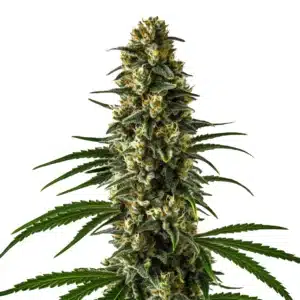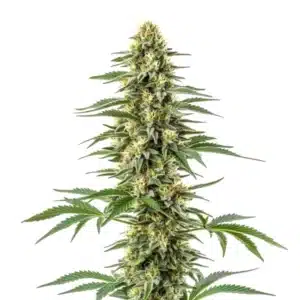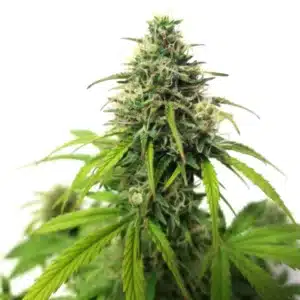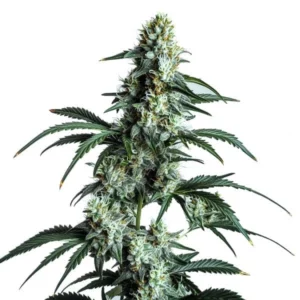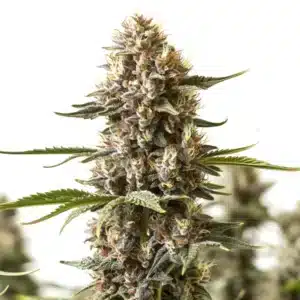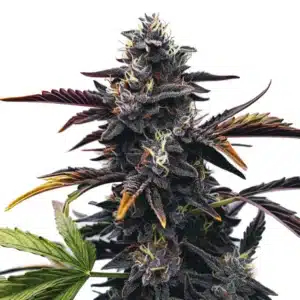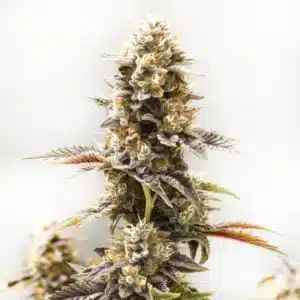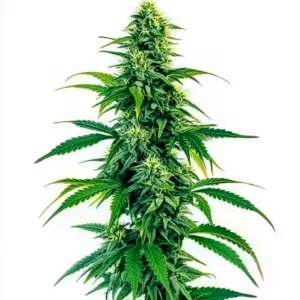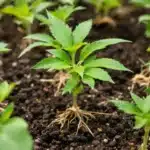
The Science Behind Light Perception in Plants
The science behind light perception in plants is fascinating and essential for growers looking to maximize their yields. Light isn’t just a source of energy; it’s a signal that guides a plant’s growth and development. Every plant, including cannabis, relies on light to perform photosynthesis and to navigate its environment.
Photosynthesis and light spectrum effects play a crucial role in how plants grow. Different wavelengths of light can trigger various growth responses. For example, blue light often encourages vegetative growth, while red light can promote flowering. Knowing these effects can help you tailor your grow lights to meet the specific needs of your cannabis plants.
Recommended Strains
Blue Dream
|
|
THC | 17% - 24% (Medium) |
|
|
Type | Feminized |
|
|
Yield | High |
|
|
Phenotype | 50% Indica / 50% Sativa |
Girl Scout Cookies
|
|
THC | 18% - 25% (Medium) |
|
|
Type | Feminized |
|
|
Yield | High |
|
|
Phenotype | 60% Indica / 40% Sativa |
Plant photoreceptors and growth are closely linked. Photoreceptors are proteins in plant cells that detect light. They help plants sense day and night, guiding them through their life cycles. When these receptors pick up light signals, they trigger a cascade of responses that influence everything from leaf expansion to flowering times.
Photosynthesis and Light Spectrum Effects
At the core of plant growth is photosynthesis. This process uses light to convert carbon dioxide and water into sugars, which fuel plant development. The role of chlorophyll in plant light absorption is fundamental here. Chlorophyll is the green pigment in plants that captures light energy.
Different colors of light affect plants in specific ways. Blue light is known to enhance the production of chlorophyll, making it vital for young plants. Red light, on the other hand, is crucial for flowering and fruiting stages. The impact of light wavelengths on plant development is clear when you observe how plants react to different grow lights.
The science behind light perception in plants highlights the importance of optimizing the light spectrum to boost photosynthesis. By carefully selecting light sources that mimic natural sunlight, growers can enhance growth efficiency. This understanding is pivotal for improving not only the quality but also the quantity of the yield.
Additionally, understanding photosynthesis and light spectrum effects enables growers to innovate with lighting technology. Advances in LED technology allow for precise control of the light spectrum, giving growers the tools to create ideal growing environments. Such innovations can lead to sustainable and productive cultivation practices.
Promos & Deals
Plant Photoreceptors and Growth
Plants have evolved a complex system of photoreceptors to detect and respond to light. These include phytochromes, cryptochromes, and phototropins. Each type of photoreceptor responds to different parts of the light spectrum and regulates specific growth processes.
Phytochromes, for instance, are sensitive to red and far-red light. They play a crucial role in seed germination and flowering. Cryptochromes respond to blue light and are involved in regulating plant circadian rhythms. Phototropins help plants grow towards light, optimizing their light absorption.
Knowing plant photoreceptors and growth is essential for manipulating plant behavior. By harnessing the power of these photoreceptors, growers can optimize plant health and productivity. The intricacies of these systems underscore the complexity of plant biology and the sophistication of nature’s designs.
The science behind light perception in plants continues to reveal new insights into how plants adapt to their environments. This knowledge is instrumental for biotechnologists and agricultural scientists aiming to breed crops with enhanced growth characteristics. By leveraging plant photoreceptors, future cultivation methods can achieve unprecedented efficiency.

Role of Chlorophyll in Plant Light Absorption
Chlorophyll absorbs light most efficiently in the blue and red parts of the spectrum. This efficiency is why many growers use LED lights with a mix of red and blue wavelengths. By optimizing light absorption, you can enhance photosynthesis and boost plant growth.
For cannabis growers, knowing the function of chlorophyll in plant light absorption can be a game-changer. Cannabis strains like “Blue Dream” from Blimburn Seeds thrive under lights that mimic the natural spectrum of sunlight, maximizing their chlorophyll activity for robust growth.
Chlorophyll’s role extends beyond mere light absorption; it is integral to the plant’s energy conversion processes. Adequate light absorption ensures that plants have the necessary energy to carry out vital functions such as nutrient uptake and growth regulation. This understanding is crucial for optimizing cultivation practices.
The importance of chlorophyll in plant light absorption emphasizes the need for precise light management in cultivation environments. By ensuring optimal light conditions, growers can improve plant resilience and productivity, ultimately leading to healthier and more robust plants.
Impact of Light Wavelengths on Plant Development
The impact of light wavelengths on plant development cannot be overstated. Each wavelength triggers different responses, which can be strategically used to control plant growth. For example, far-red light can extend the flowering phase, which is beneficial for increasing yields.
In contrast, UV light, although not visible, can enhance the production of certain compounds in cannabis, such as THC. Strains like “Girl Scout Cookies” from Blimburn Seeds may respond to these light tweaks, resulting in more potent buds.
The science behind light perception in plants provides insights into how different wavelengths can be used to tailor plant growth. By understanding how plants react to each part of the light spectrum, growers can create customized lighting plans to optimize plant health and productivity.
Innovations in lighting technology continue to expand the possibilities for using light wavelengths to influence plant development. From spectral tuning to dynamic light adjustments, these technologies offer growers unprecedented control over their cultivation environments, leading to enhanced crop performance.
Light Signaling Pathways in Plants
Plants use light signaling pathways to make crucial decisions about growth and development. These pathways involve complex interactions between photoreceptors and various growth hormones. By understanding these pathways, growers can influence plant behavior through controlled lighting.
For instance, manipulating light signaling can help synchronize flowering times in cannabis crops, ensuring a uniform harvest. This control is especially beneficial for commercial growers looking to streamline production and improve efficiency.
Light signaling pathways in plants represent a sophisticated communication network that governs plant responses to environmental cues. By decoding these pathways, scientists and growers can develop strategies to optimize plant health and enhance growth outcomes.
The science behind light perception in plants underscores the importance of these signaling pathways in plant development. As research progresses, new techniques for manipulating these pathways can lead to advances in agricultural productivity and sustainability, benefiting both small-scale and commercial growers.
Practical Applications for Cannabis Growers
Real-life examples of light manipulation include adjusting light duration to induce flowering in photoperiod strains. By providing more light hours, you can keep cannabis plants in the vegetative stage. Conversely, reducing light hours can trigger flowering.
Cultivators often use these techniques with strains like “Critical Mass” from Blimburn Seeds to maximize their harvest. By understanding the science behind light perception in plants, you can create optimal growing conditions tailored to your specific needs.
Practical applications of light science also extend to the use of advanced lighting technologies such as LED systems. These systems allow for precise control over light intensity and spectrum, enabling growers to simulate optimal growing conditions year-round.
Moreover, the integration of automation and smart technology in lighting systems offers cannabis growers even greater control. Automated systems can adjust lighting conditions based on real-time plant data, further optimizing growth conditions and improving yield quality.
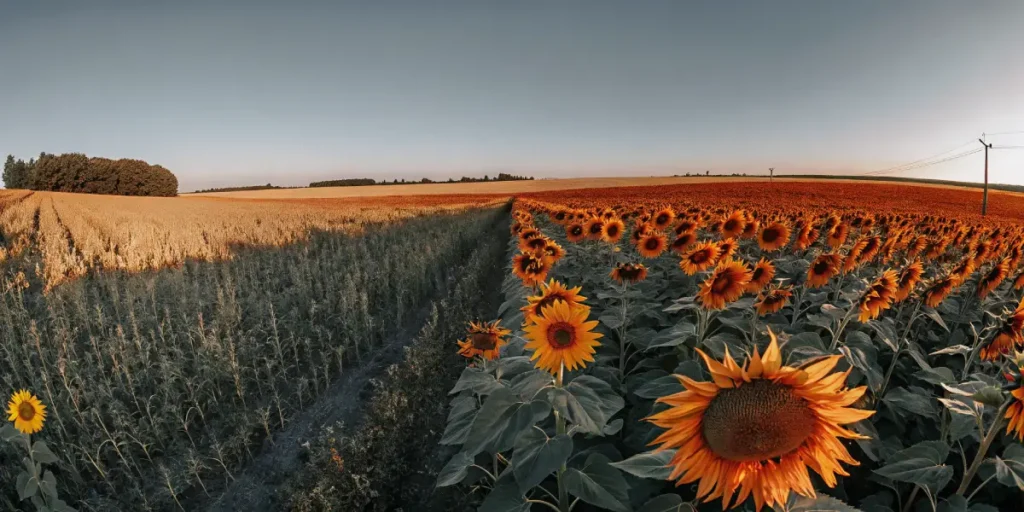
FAQs
How does light spectrum affect cannabis growth?
Light spectrum plays a pivotal role in cannabis growth. Different wavelengths can stimulate various plant responses. For instance, blue light encourages vegetative growth, while red light promotes flowering. By adjusting the light spectrum, growers can influence the growth stages of their cannabis plants.
This knowledge allows you to tailor your lighting setup to meet the specific needs of your plants. Whether you’re growing “Blue Dream” or “Sour Diesel,” knowing the effects of light spectrum can enhance your cultivation efforts and improve your harvests.
Incorporating advanced light spectrum management techniques can lead to significant improvements in plant morphology and chemical composition. By fine-tuning the light spectrum, growers can influence not only growth rates but also secondary metabolite production, enhancing the overall quality of the harvest.
The science behind light perception in plants continues to evolve, providing growers with new methodologies to optimize light spectrum effects. As research deepens, the ability to manipulate light for enhanced cannabis growth will become increasingly sophisticated, offering new opportunities for innovation in cultivation practices.
What are the key photoreceptors in plants?
Plants have several key photoreceptors, including phytochromes, cryptochromes, and phototropins. Phytochromes detect red and far-red light and are essential for germination and flowering. Cryptochromes respond to blue light and help regulate daily cycles.
Phototropins also respond to blue light and influence how plants grow towards light sources. By understanding these photoreceptors, growers can manipulate lighting conditions to control plant growth and optimize yields.
Advancements in our understanding of plant photoreceptors and growth offer new opportunities for enhancing crop resilience and performance. By leveraging photoreceptor pathways, breeders can develop new plant varieties with improved growth characteristics and stress tolerance.
The science behind light perception in plants is integral to these advancements, offering insights into how photoreceptors mediate plant responses to environmental stressors. As this field of research expands, growers will have more tools at their disposal to enhance crop productivity and quality.
Why is chlorophyll important for plant light absorption?
Chlorophyll is crucial for plant light absorption because it captures light energy used in photosynthesis. It absorbs light most effectively in the blue and red parts of the spectrum, which is why these wavelengths are emphasized in grow lights.
For cannabis strains like “Girl Scout Cookies,” optimizing chlorophyll activity through proper lighting can enhance photosynthesis, leading to healthier plants and better yields. Understanding chlorophyll’s role can help you fine-tune your growing environment.
The function of chlorophyll in plant light absorption extends to its impact on plant metabolism and growth regulation. Ensuring optimal chlorophyll function is essential for maintaining healthy plant physiological processes, ultimately contributing to superior plant vigor and yield.
Incorporating the science behind light perception in plants into cultivation practices allows growers to optimize the role of chlorophyll in light absorption. By mastering these principles, growers can achieve more efficient energy use and higher crop productivity.
How can I manipulate light for better cannabis growth?
To manipulate light for better cannabis growth, start by adjusting the duration and spectrum of your grow lights. Longer light periods can keep plants in the vegetative stage, while shorter periods induce flowering. The spectrum should match the plant’s growth phase.
For example, use more blue light for vegetative growth and more red light for flowering. With strains like “Critical Mass,” these adjustments can lead to increased yields and more potent buds. The science behind light perception in plants offers growers numerous ways to optimize their cultivation process.
Manipulating light conditions also involves considering factors such as light intensity and distribution. Uniform light distribution ensures all parts of the plant receive adequate light, promoting even growth and development. This holistic approach to light management can significantly enhance cultivation outcomes.
The science behind light perception in plants provides a framework for understanding how to leverage light as a tool for improving cannabis growth. By integrating these principles into your cultivation strategy, you can achieve more precise control over plant development and realize superior harvest results.
What are light signaling pathways in plants?
Light signaling pathways in plants are the processes by which plants interpret and respond to light signals. These pathways involve interactions between photoreceptors and growth hormones, leading to changes in plant behavior.
By knowing and manipulating these pathways, growers can synchronize flowering times, control plant size, and improve overall plant health. This knowledge is particularly valuable for commercial cannabis growers aiming for consistent and high-quality harvests.
Light signaling pathways in plants are fundamental to understanding plant adaptation and survival strategies. By modulating these pathways, growers and researchers can influence plant responses to environmental cues, enhancing growth efficiency and adaptability.
The science behind light perception in plants continues to uncover new dimensions of these signaling pathways. As our knowing deepens, the ability to manipulate light signaling for improved plant performance will revolutionize cultivation techniques, paving the way for more sustainable and productive agricultural practices.



